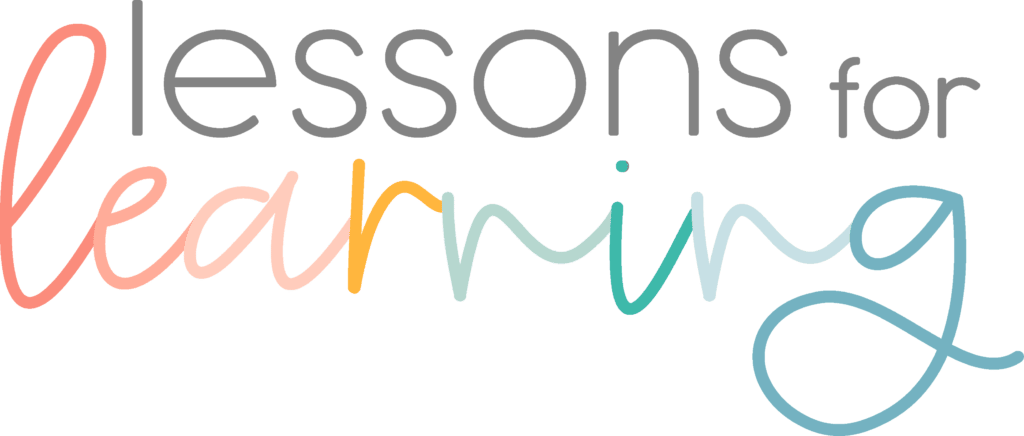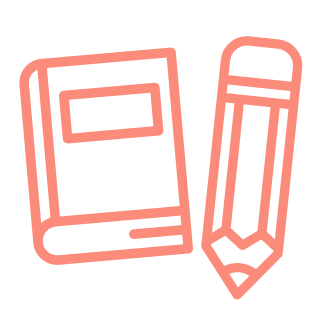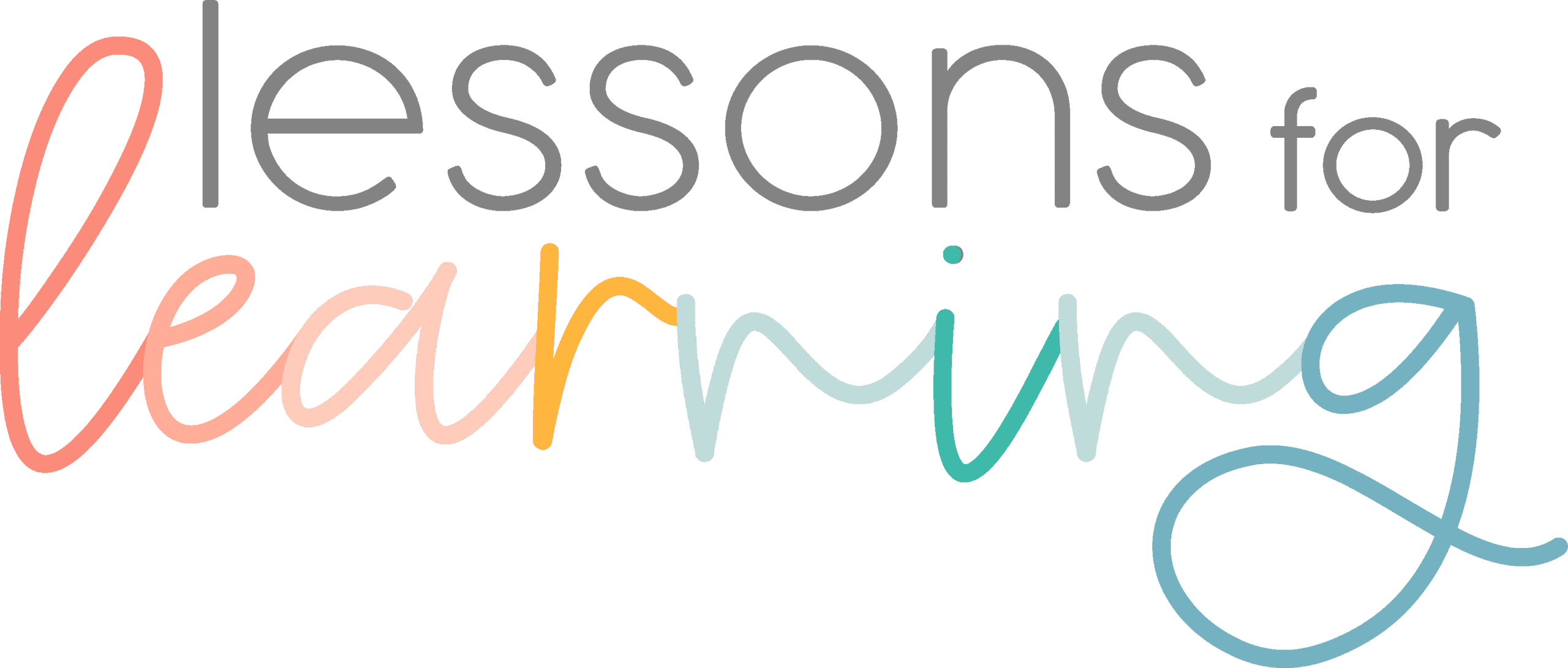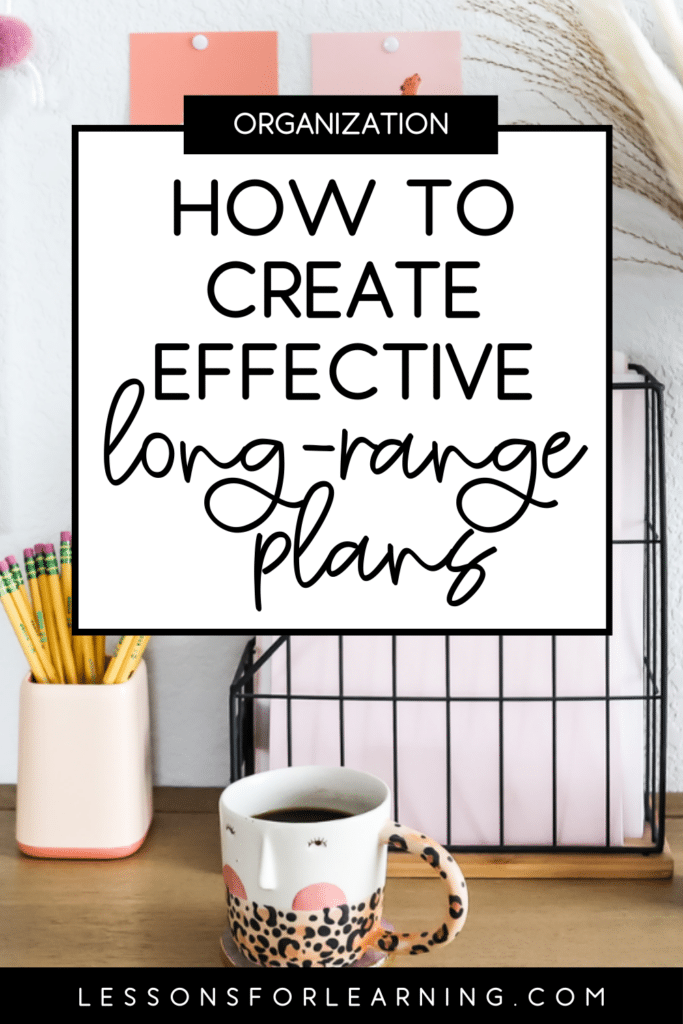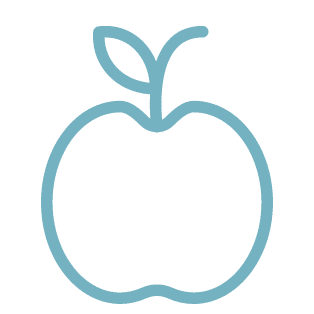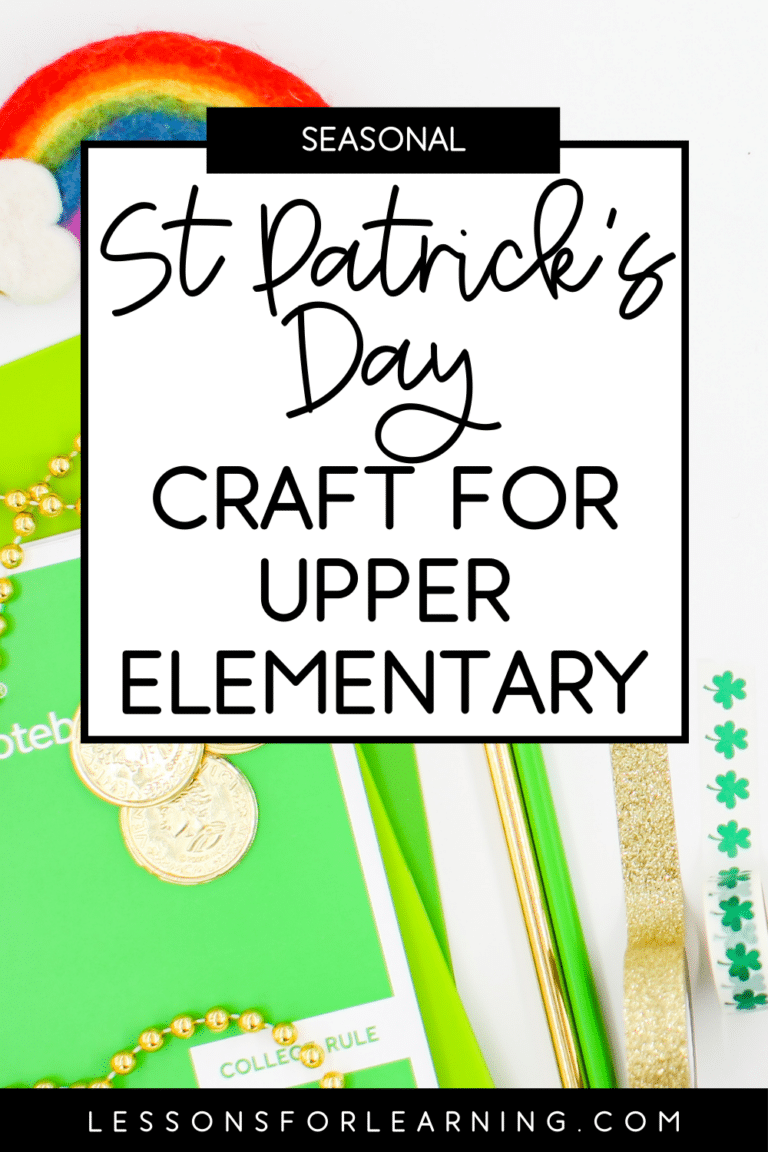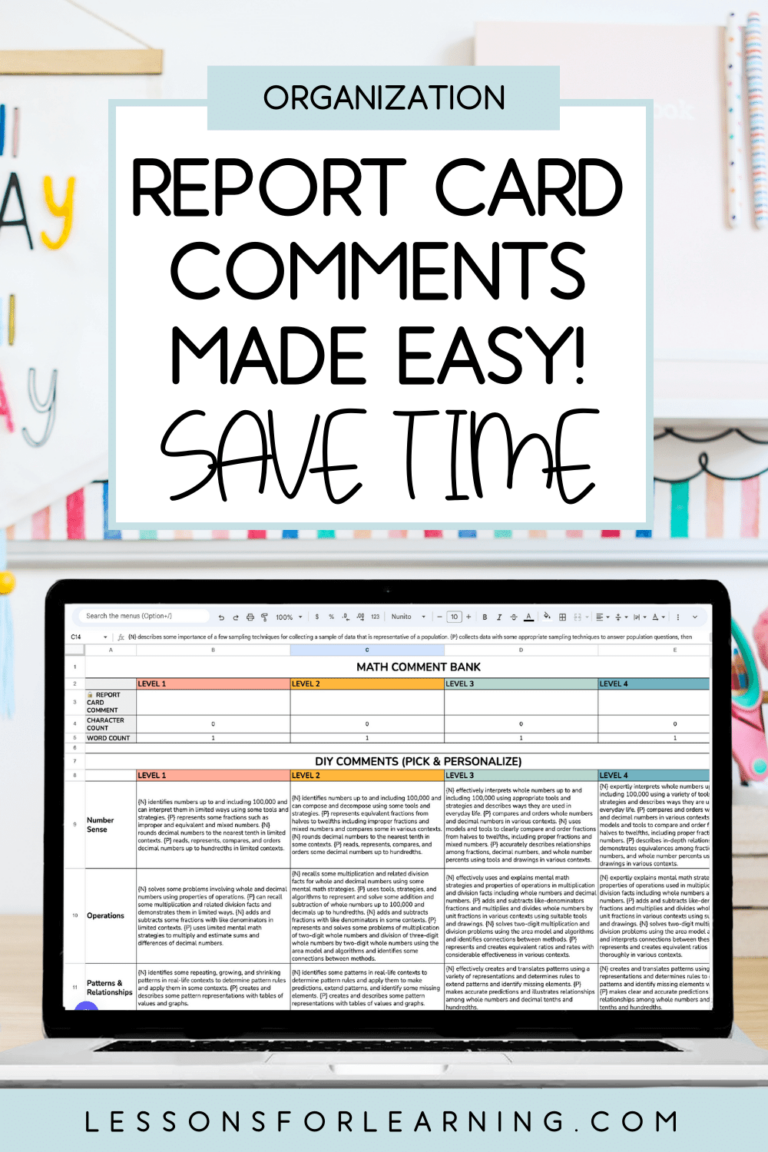There is comfort in knowing what’s happening next, isn’t there? I love a little bit of unpredictability but I find I’m best able to roll with the punches when I have done a bit of preparation to meet those moments. In my life, having a good night’s sleep and plenty of caffeine gets me ready for whatever comes my way. In the classroom, it means having long range plans ready with a healthy dose of flexibility.
Long range plans are important to navigate the school year. However, they can also help day-to-day by allowing you to focus on how to be more fluid and to address changes throughout the year depending on your students’ needs and interests.
Even if you are reading this mid-way through the year, it’s not a bad time to check in with your curriculum and make adjustments to your plans. This could also be a good time to try out some long range plans from now until the end of the year; consider it a warm-up before tackling a full school year.

Step 1: Curriculum Breakdown
To start you’ll need to examine your curriculum. Again, depending on where you are in your year this might be from September to the end or for whatever is left.
Go through the curriculum documents subject by subject and start to break it down. Combine what is similar and can be taught together. Within the expectations there is often opportunity to bundle together a few aspects (eg. writing, editing, publishing).
This step will help to narrow the focus of your long range plans; this is an integral first step to give you direction as you dive into the rest!
Step 2: Identify Key Concepts and Skills
After looking at your curriculum, you should have a general sense of what the “big” ideas are.
For example in the Grade 6 Ontario Language curriculum there is a focus on three types of writing: informational, expository, and narrative. You can use these as a guide for general projects and units to fill in on your long range plans (LRP) for now.
If it’s later in the year and you’ve already covered one or two of the expectations, this makes it a bit easier to pinpoint what to cover in the last bit of time. This might be more mid-range than long range plans but that’s still okay!
Step 3: Scope & Sequence
Looking at the big picture, start to place different themes, units, and topics into the months of the year. You’ll want to consider the time required for different units as well as what students will need in terms of skills and background knowledge.
Think about complexity:
- What amount of time is needed?
- What supplies and people-power are necessary? (Budget might come into play here!)
- How should I scaffold the lessons throughout a unit?
- What skills do students need to have to be successful? Do these skills need to be explicitly taught or can a refresher lesson work?
Then consider prior knowledge including skills and information or context. Do students need to know about person X or concept Y before doing the lesson and tasks? If so, when and how can I include those aspects in lessons in the long range plans that are necessary for successful learning?
And finally, seasons come into play. This applies for timing as well as thematic elements. First, what could work when you have a long stretch before a break, and alternatively, what if you only have a bit of time? Secondly, what’s a good way to spend time in winter months or those months closer to the end of year when the temperatures start to rise outside (and inside your classroom!).
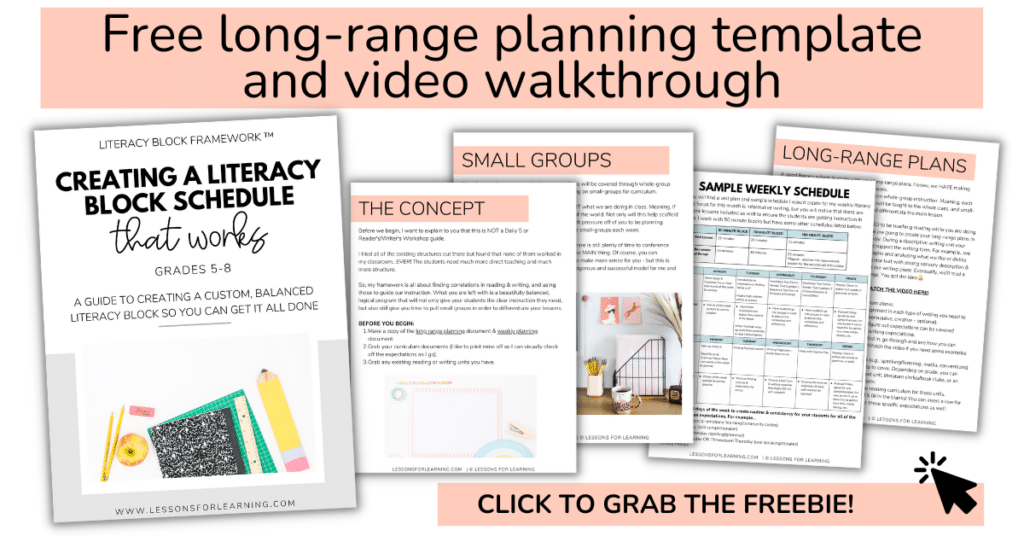
Step 4: Consider Cross-Curricular Connections
Once you’ve completed the subject-by-subject breakdown, look to those groupings of big ideas and think about where there would be opportunities for cross-curricular learning.
These connections are easy to incorporate into Language. For example, in shaping long range plans you can combine expectations from Language with Social Studies by getting students to write an informative article on the government’s response to an environmental issue. Another cross-curricular opportunity is to examine new vocabulary for a subject such as math, science, or art in a nonfiction article.
Step 5: Project-Based Learning & Real-World Connections
This is my favourite part of long range planning! Look at your general units and themes and see if you can turn any of the assessments into a project-based learning opportunity that can make real-world connections for students.
One of my students’ most loved assignments year after year is when they create a restaurant in a descriptive writing unit.
Students design a menu for a restaurant concept they brainstorm. They describe menu items using figurative language and writing a descriptive paragraph about the restaurant with tons of sensory details. This leads to a “restaurant tour” where every students shows off their creations.
You can get this ready-made resource to create a restaurant unit so your students can flex their creativity and writing skills (and fall in love with the assignment too!).
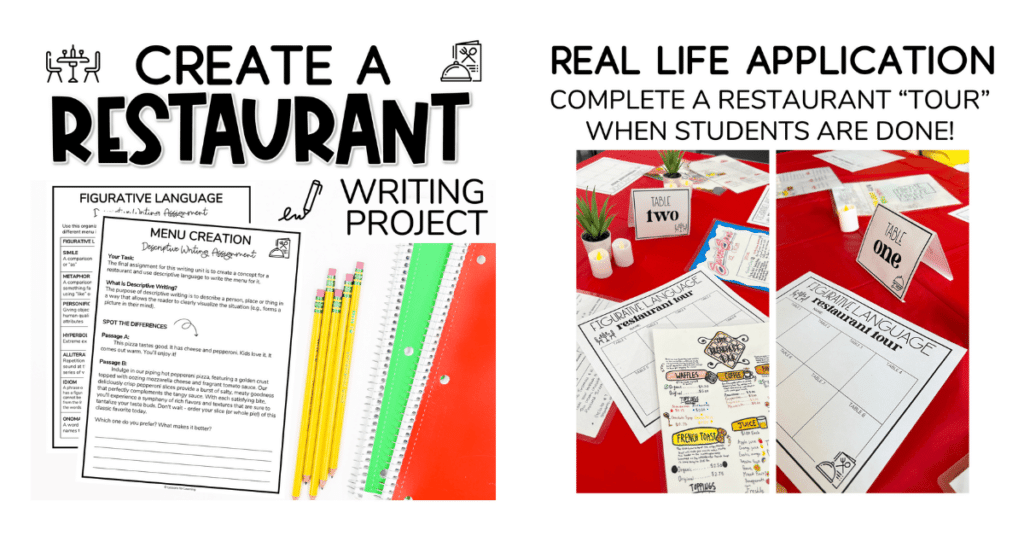
Another option for project-based learning and developing real-world skills is having students create their very own magazines. Students take on the tasks of writer, designer, and editor, which develops their informational writing skills along with soft skills such as time management and problem solving.
This project is ideal for cross-curricular connections! There are plenty of opportunities to choose topics that fit with any number of subjects.
Want to integrate with science? Consider the unit of study you’re in or just completed and brainstorm a list of topics. Space is always a great option and it’s wide open for topics too!
Working on a particular form of art or artist? Do a deep dive into the time period, the genre or form, or a similar artist. The magazine could include an artist profile, critiques, and more.
The adaptability of this Create a Magazine Writing Unit is ideal! Meet the needs of your students while turning informational writing into an engaging unit of study that is driven by their interests.
Step 6: Cultural Relevance & Diversity
This step is a best-bet to ensure your long range plans reflect cultural diversity through texts, perspectives and conversations in your classroom!
Take some time to note the significant holidays and events throughout the year. My school board publishes a dates of significance calendar every year and I use it as a reference tool in this stage of my planning.
If you don’t have access to such a calendar rest assured there are resources available to help! A quick online search of “days of significance and [your location (city, province/state, country)]” should provide the information you need. Or if you’re new to a school, check in with other teachers or admin.
Connecting your classroom and materials to reflect the wider world is a way to have students see themselves and to develop their knowledge and understanding of others too.
Step 7: Reflect & Revise Long Range Plans
The final step is the most active… and most integral. Review your plans regularly!
At different points in the year you will have more knowledge of your students that will inform your long range plans. Each group of students is different and long range plans likely won’t be a one-size fits all approach! So be flexible and revise as needed.
And here’s my final bit of advice to help with the unpredictability of teacher life:
- Get a good night’s sleep
- Grab your best beverage
- And download your own FREE Framework for Long Range Plans.
Related posts you might want to check out:

